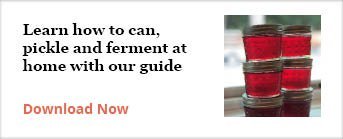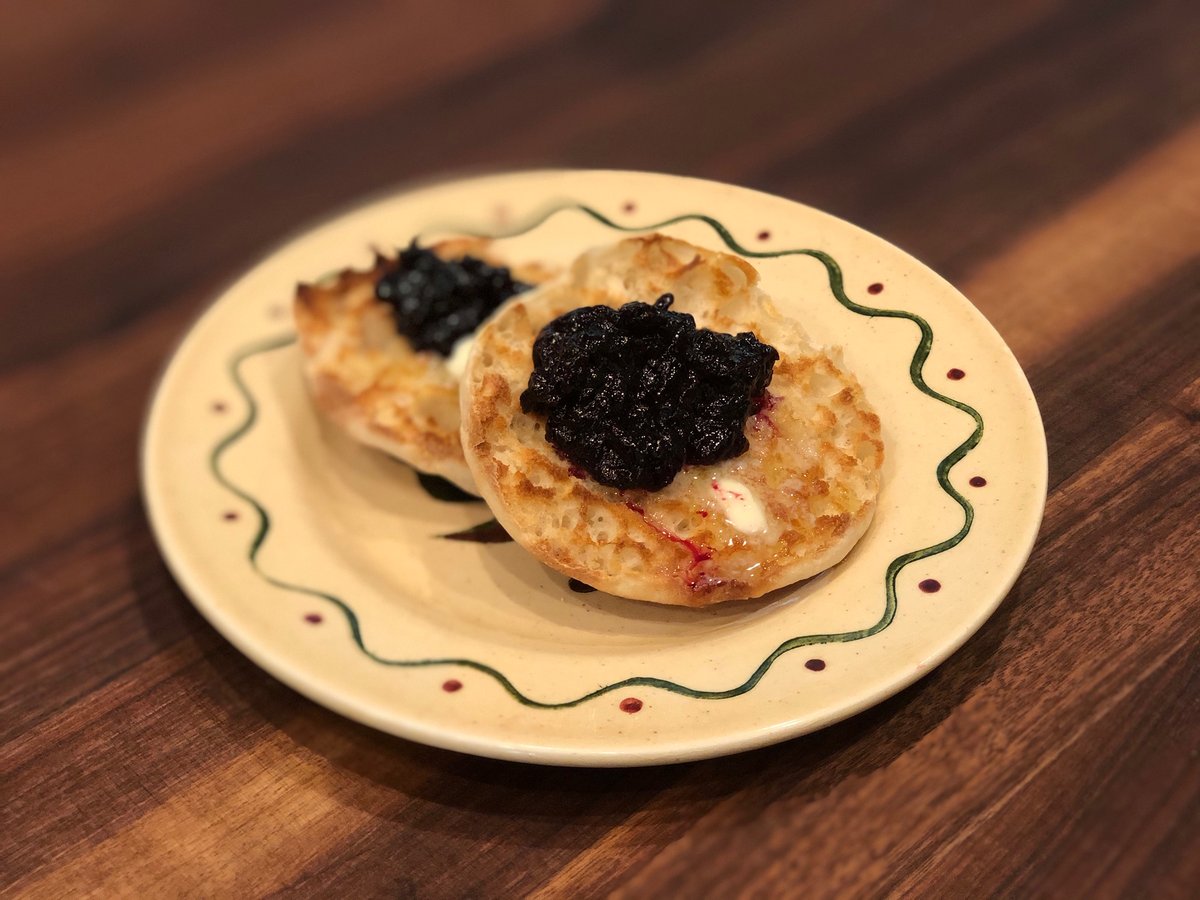
I love to make jam; I’m sure in part because I used to watch my mom make it as a kid. Thinking about Mom in the kitchen brings back such fond memories. We primarily grew our own food when I was young, and even when we moved into the city and stopped growing our own produce, my mom retained her passion and keen eye for the best produce.
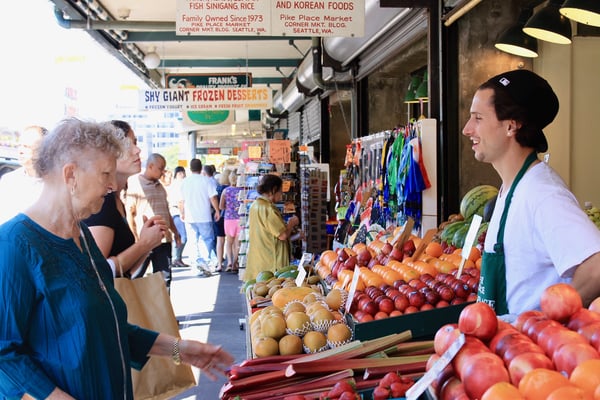
As an adult when I started canning and preserving, my mother was still alive, so I was lucky enough to have the opportunity to pick her brain. She was a little foggy on details since it had been years since she canned, but she was still able to give me some good pointers. My mom had a way of making things simple, so I’ll attempt to do that for you.
When I asked my mom about using pectin when making jam, she didn’t really have a whole lot of experience to offer because she never used it. When I asked her why, she summed it up to being poor and said “We didn’t have money for pectin or a lot of sugar, but what we did have was a lot of fruit.” That's the kind of jam I like, loaded with fruit and not loaded with sugar!
Since pectin is activated by sugar, it requires using a considerable amount of sugar to activate the pectin and set (i.e. thicken) your jam. If you try to cut back on the sugar, it won't set properly. There are low sugar pectins that I have played around with but personally I find the texture to be less than desirable. Ultimately, I think it is easier to make jam without pectin, although it does require trusting your intuition rather than following an exact recipe. I know not everyone is comfortable with this idea, but I hope that I can spell out the ratios and techniques for you well enough to give you the confidence to try making jam on your own.
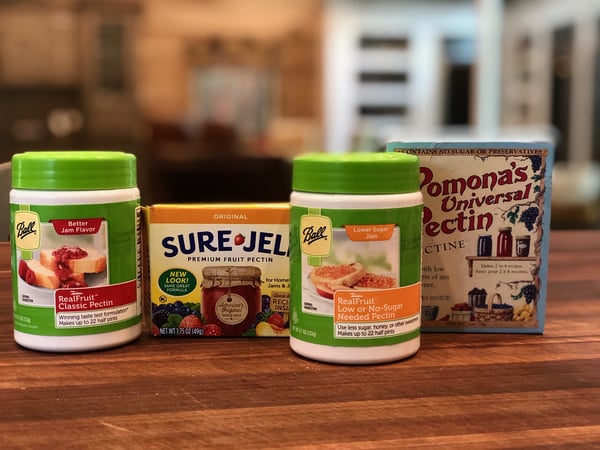
Although we are not adding commercially-made pectin to our jam, all fruit has naturally occurring pectin in it. Different fruits have varying levels of natural pectin, blueberries are low in pectin but apples are high. The fruits that are highest in pectin are apples, lemons, currants, grapes, sour cherries, cranberries, quince and lingonberries. Did you notice what these fruits all have in common? They are all tart or sour, which is an indication of high pectin in the fruit.
Peaches, pears, strawberries, apricots and blueberries are generally pretty sweet, therefore they tend to have a lower pectin content. All fruit pectin levels will vary at times. I’m sure you have had a peach that wasn’t very sweet and one that was at some point. The peach that was really sweet has a lower level of pectin than the not-so-sweet peach. The not-so-sweet peach is likely less ripe and therefore less sweet and which would mean it has a higher pectin content.
Concorde grapes are a great example: you will generally have a mixture of ripe grapes and less ripe grapes mixed together. The combination of the two give you both the ripe fruit taste and the increased pectin level that the jam needs to set.
If you simply take fruit and cook it with some sugar to sweeten it a little, it will get thick enough to turn into jam by the naturally occurring pectin in the fruit and the process of reduction. Reduction occurs when we simmer the fruit, and the liquid turns to steam and evaporates, which thickens the jam. A jam can really be made this simply, that is how my mom made it. She just washed and prepared fruit, put it in a pot with some sugar, simmered it until it got thick and put it in a clean and sterilized canning jar. That is the simplified version of making jam, but I want to offer a couple more tips to this basic idea so that you can improve the flavor and texture of your jam beyond simply simmering fruit and sugar together.
The main reason using commercially-made pectin is popular is because it allows you to get very consistent results in your jams. When you are completely guessing as to how much pectin your fruit has in it, your results will vary more. I am very comfortable with this idea; you may not be.
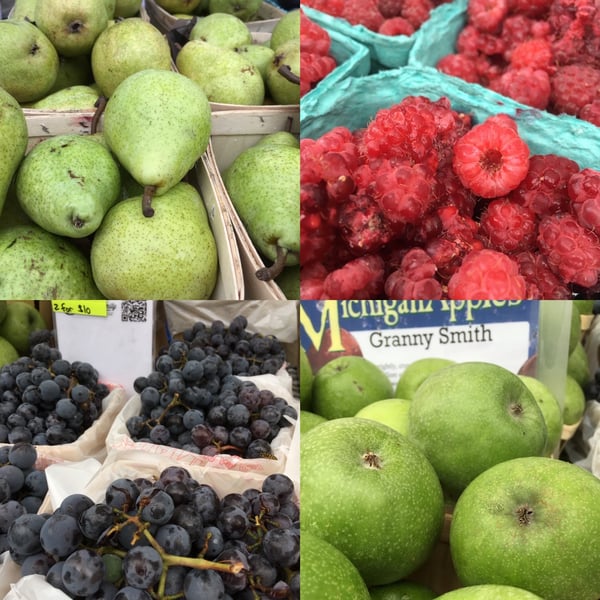
We are relying in part on the natural pectin in the fruit to set the jam, but we will benefit from a little pectin boost. Although we are not adding powdered pectin, we will add citric acid or lemon juice to the jam. This gives an additional pop of pectin but also some acidity that balances the sweetness of the jam. Citric acid provides very consistent results, which is why I like to use it. If using lemon juice, I would recommend Real Lemon lemon juice as this will provide more consistent results than fresh lemon juice. By adding citric acid to the jam, we are increasing the pectin in the jam which allows the jam to set more quickly. The reason I want my jam to set more quickly is so I don’t have to cook it as long. When you don’t have to cook your jam for long, you will yield more jam. Secondly, when the fruit is cooked less it can maintain more of its shape and more of its freshness of flavor. Fruit cooked for a long time can get rather murky and dull.
The other ingredient we are using is sugar. You can leave the sugar out completely or use other natural or artificial sweeteners. I do not have enough experience using these alternatives to sugar, so I’m not able to provide much beneficial insight here. I would welcome all your suggestions on the subject if you want to add them in the comment section below. I know our readers will value your advice!
What I can share with you is that the less sugar you add to your jam, the less shelf stable it is. Sugar is an amazing preservative, think about a piece of hard candy, it's mostly sugar, right? Unless you melt it, that piece of candy will pretty much last forever. The more sugar you put in your jam, the longer it will last. The lower sugar variety here lasts for 6 months on the shelf, compared to a full year if I added the traditional amount of sugar. Don’t be dismayed, this recipe makes a pretty small batch, so you should have no problem going through it in 6 months. You can also refrigerate your jam after canning and it will last a year.
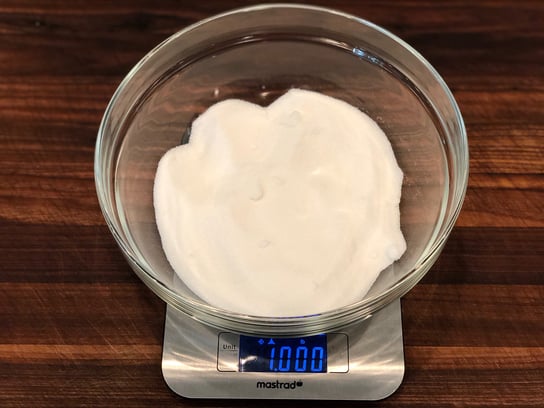
No-Pectin Fruit Jam
Scroll down for a printable version of this recipe.
Yields 6 ½ pint jars of jam
3 pounds of fresh fruit
1 pound of sugar
1 Tablespoon of citric acid or 3 Tablespoons Real Lemon juice
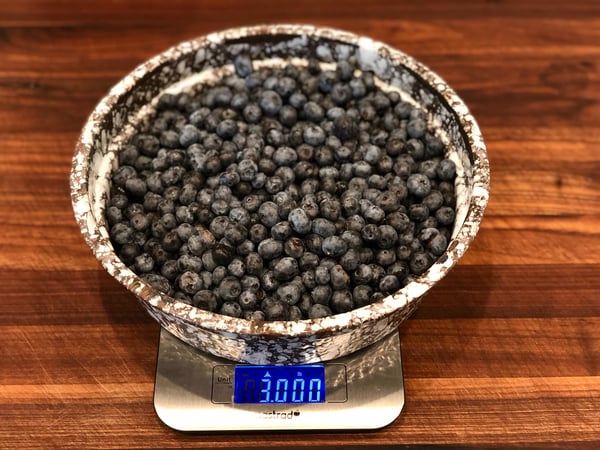
1. Prepare your fruit by washing it thoroughly and removing any blemishes, stems, pits and seeds. Remove skin if desired and dice.
2. Prepare your canning jars and lids buy washing and rinsing them thoroughly. Place them in a 200-degree oven for at least 20 minutes. They can sit in the oven until you need them.
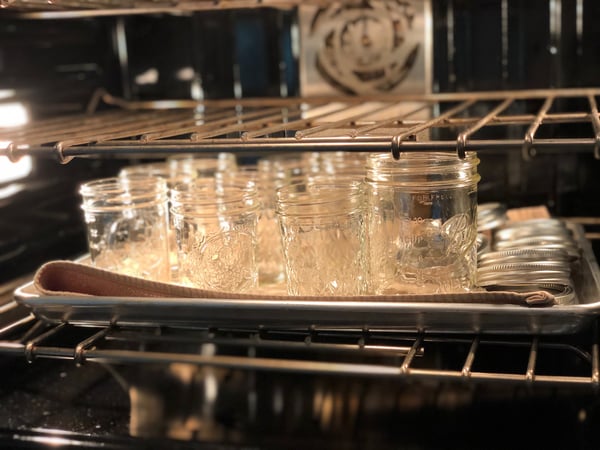
3. Place fruit, sugar and citric acid in a non-reactive 6 to 8-quart stock pot.
4. Turn the heat on medium low and allow fruit to warm and sugar to dissolve.
5. Once sugar has dissolved, turn heat up to medium. Stir regularly over a low boil for approximately 10 to 20 minutes.
6. Take a chilled plate out of the freezer, put a teaspoon of jam on the plate and run your finger through it. If it leaves a trail it is done. I would suggest starting this test at about 10 minutes and then check every 5 minutes after. Once you are a pro and know what the cooked fruit should look like when it is done, you may choose to skip this step all together.
Note: How thick you like you jam is a personal preference; jam should be spreadable but not stiff.
Note: If you find the jam not sweet enough, it is very easy to adjust at this point. Simply sprinkle some additional sugar in the jam until it suites your taste. Cook it long enough to dissolve the sugar and you are ready to go.
7. Pull your lids and jars out of the oven and fill them with jam just below the threads of the jar. Put the lid on and set aside at room temperature. The lids will pop when they have sealed. You will know this has happened when you push down on the lid and it doesn’t bounce back. Give the jars at least 30 minutes to complete this process.
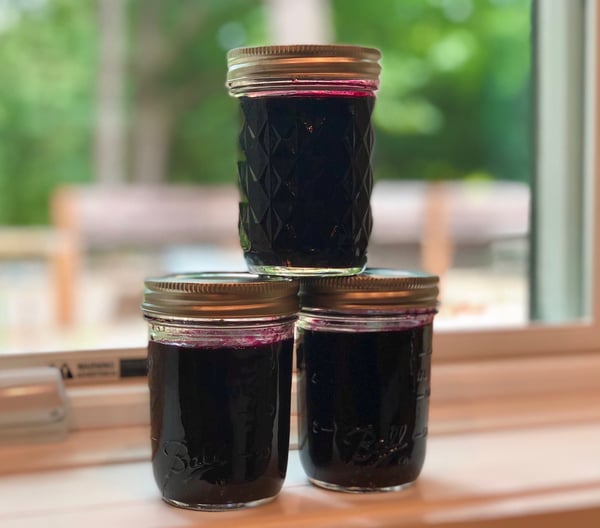
If you would like more detailed information on the subject of canning and processing, download our free guide.
Now that you know this simple formula for making jam, you are going to want to do more with it than just put it on toast. Don’t get me wrong: toast slathered with butter and homemade jam is noteworthy (English muffins are even better!), but there is a lot more to do with jam than just top toast. I use my homemade jam in layered cakes and trifles or as a filling for donuts, packzi and cupcakes. You can make glazes out of it for grilled meats and poultry. People are even using jam in cocktails, so the sky is the limit!
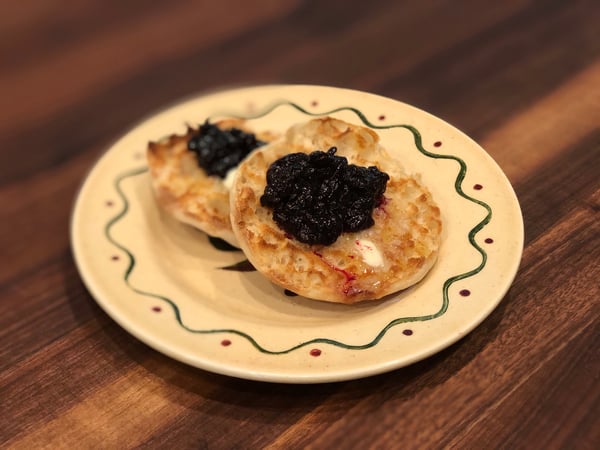
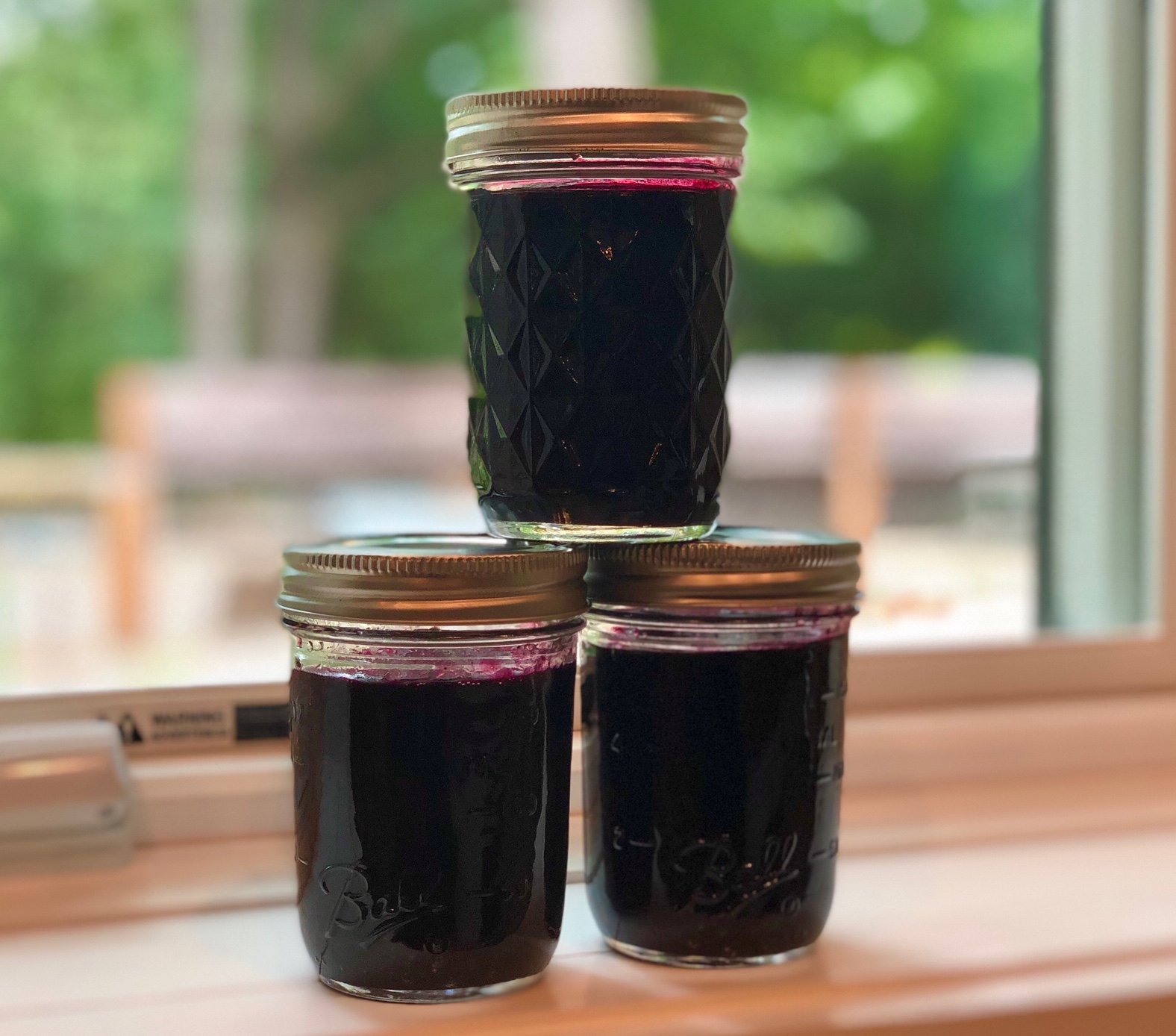
No-Pectin Fruit Jam
Ingredients:
- 3 pounds of fresh fruit
- 1 pound of sugar
- 1 tablespoon of citric acid or 3 Tablespoons Real Lemon juice
Instructions:
- Prepare your fruit by washing it thoroughly and removing any blemishes, stems, pits and seeds. Remove skin if desired and dice.
- Prepare your canning jars and lids buy washing and rinsing them thoroughly. Place them in a 200-degree oven for at least 20 minutes. They can sit in the oven until you need them.
- Place fruit, sugar and citric acid in a non-reactive 6 to 8-quart stock pot.
- Turn the heat on medium low and allow fruit to warm and sugar to dissolve.
- Once sugar has dissolved, turn heat up to medium. Stir regularly over a low boil for approximately 10 to 20 minutes.
- Take a chilled plate out of the freezer, put a teaspoon of jam on the plate and run your finger through it. If it leaves a trail it is done. I would suggest starting this test at about 10 minutes and then check every 5 minutes after. Once you are a pro and know what the cooked fruit should look like when it is done, you may choose to skip this step all together.
- Pull your lids and jars out of the oven and fill them with jam just below the threads of the jar. Put the lid on and set aside at room temperature. The lids will pop when they have sealed. You will know this has happened when you push down on the lid and it doesn’t bounce back. Give the jars at least 30 minutes to complete this process.

